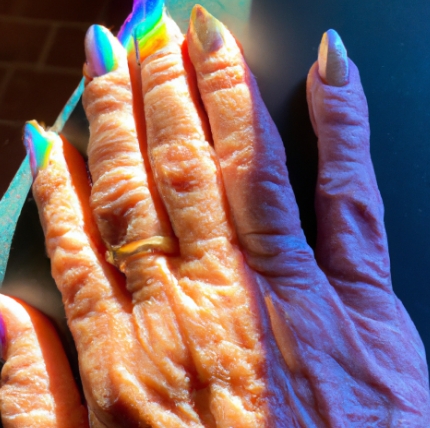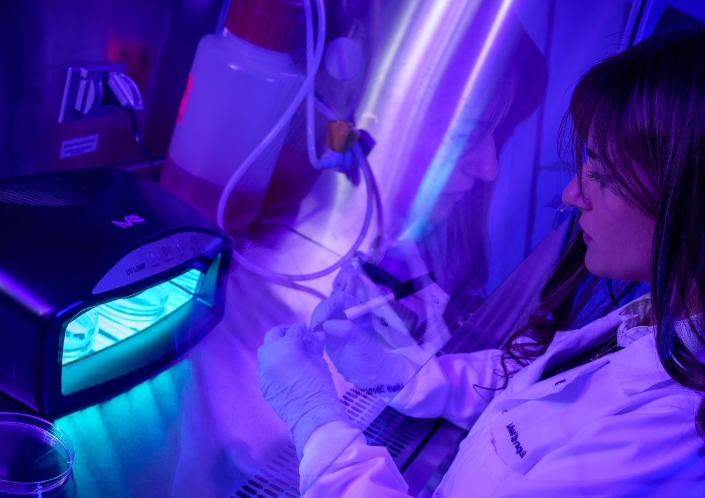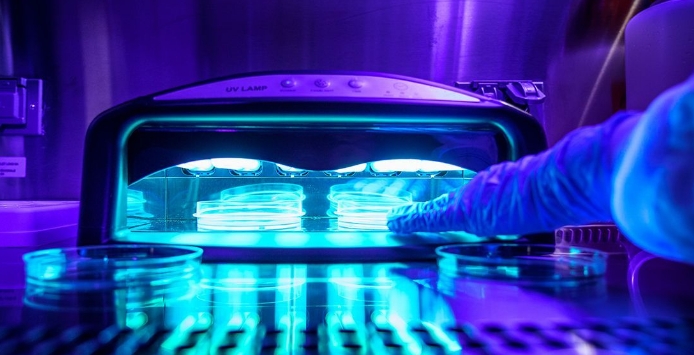The post Can UV Flashlights Cause Cancer? A Detailed Analysis appeared first on Tank007.
]]>What is UV Light?
UV light is divided into three main types based on wavelength:
- UVA (320–400 nm): This type is the least harmful and is commonly emitted by UV flashlights. It is used in various applications like mineral detection and pet stain detection.
- UVB (280–320 nm): UVB rays are more harmful than UVA rays, causing sunburns and increasing the risk of skin cancer.
- UVC (100–280 nm): UVC rays are the most dangerous but are mostly absorbed by the Earth’s ozone layer, so they rarely reach the surface of the Earth. However, certain UVC lamps are used in disinfection and are much more dangerous than UVA or UVB.
UV flashlights typically emit UVA light, which is the least harmful of the three types, but prolonged or excessive exposure can still have adverse effects.
Can UV Flashlights Cause Cancer?

While UVA light is less harmful compared to UVB and UVC, excessive or prolonged exposure to UV radiation has been linked to skin damage and an increased risk of skin cancer. UV flashlights primarily emit UVA light, but they can still cause health issues if used improperly.
Potential Risks of UV Flashlights
1. Skin Cancer
Long-term exposure to UV radiation can cause skin damage and increase the risk of skin cancer, particularly melanoma, a type of skin cancer. Although UVA light is less harmful than UVB and UVC, prolonged or repeated exposure can lead to DNA damage in skin cells, which can eventually develop into cancer.
| UV Type | Risk of Skin Cancer |
|---|---|
| UVA | Low to moderate risk, especially with prolonged exposure. |
| UVB | High risk, causes skin burns and long-term skin damage. |
| UVC | Extremely high risk, can cause severe burns and DNA damage. |
2. Eye Damage and Cataracts
Exposure to UV light, especially UVA, can also cause damage to the eyes. Prolonged or direct exposure to UV rays may lead to cataracts (clouding of the eye lens), photokeratitis (painful eye inflammation), and other eye diseases. While UV flashlights typically emit lower levels of UV radiation, it’s still important to avoid prolonged eye exposure.
| UV Type | Risk of Eye Damage |
|---|---|
| UVA | Moderate risk, can cause cataracts and eye irritation. |
| UVB | High risk, can cause severe damage to the cornea and retina. |
| UVC | Extremely high risk, causes immediate and severe damage to the eyes. |
How UV Flashlights Could Contribute to Cancer Risk

1. Prolonged and Repeated Exposure
The main risk factor associated with UV flashlights is repeated or prolonged exposure. If a person frequently uses UV flashlights without proper protective measures, it increases the chances of DNA damage to skin cells. Even if the UV flashlight only emits UVA light, repeated exposure over time could accumulate, leading to skin damage that increases the likelihood of developing skin cancer.
2. Improper Use and Proximity
Using UV flashlights improperly, such as pointing them directly at the skin or eyes for extended periods, can increase the risk of adverse effects. Additionally, holding the flashlight too close to the skin for extended periods during tasks like pet stain detection or mineral inspections can lead to higher exposure levels.
Safety Precautions When Using UV Flashlights
1. Wear Protective Gear
- UV-Protective Glasses: Protect your eyes by wearing special UV-blocking glasses designed for UV light exposure. This will help prevent eye strain and damage.
- Protective Clothing: Wear long-sleeve clothing, gloves, and other protective gear to shield your skin from direct exposure to UV light.
2. Limit Exposure Time
- Short bursts of light: Avoid prolonged exposure to UV flashlights by using them in short bursts. This reduces the risk of skin damage.
- Take breaks: If you need to use a UV flashlight for an extended period, take breaks to reduce prolonged exposure.
3. Avoid Direct Eye Exposure
- Never shine the UV flashlight directly into your eyes. If you need to work with UV light, use protective eyewear to shield your eyes from harmful UV rays.
4. Choose Lower Power Flashlights for Casual Use
For regular or casual use, choose a low-power UV flashlight with 365nm wavelength. These are less likely to emit dangerous levels of UV light compared to higher-power models.
Can UV Flashlights Be Used Safely?

Yes, UV flashlights can be used safely, but like any tool, it is important to follow proper safety guidelines. The key to safe use lies in limiting exposure time, using protective equipment, and selecting a flashlight with a lower UV intensity for regular use.
By using appropriate precautions, you can enjoy the many benefits of UV flashlights without putting your health at risk.
Conclusion: Are UV Flashlights Dangerous?
While UV flashlights that emit UVA light are not as dangerous as those emitting UVB or UVC light, improper or prolonged exposure can still pose health risks, including skin damage and an increased risk of skin cancer. It’s important to use UV flashlights responsibly by following safety precautions such as wearing protective gear, limiting exposure time, and using low-power flashlights for everyday tasks.
By being mindful of these precautions, you can safely use UV flashlights for their intended applications—whether it’s for resin curing, forensics, mineral detection, or pet stain removal—while minimizing health risks.
The post Can UV Flashlights Cause Cancer? A Detailed Analysis appeared first on Tank007.
]]>